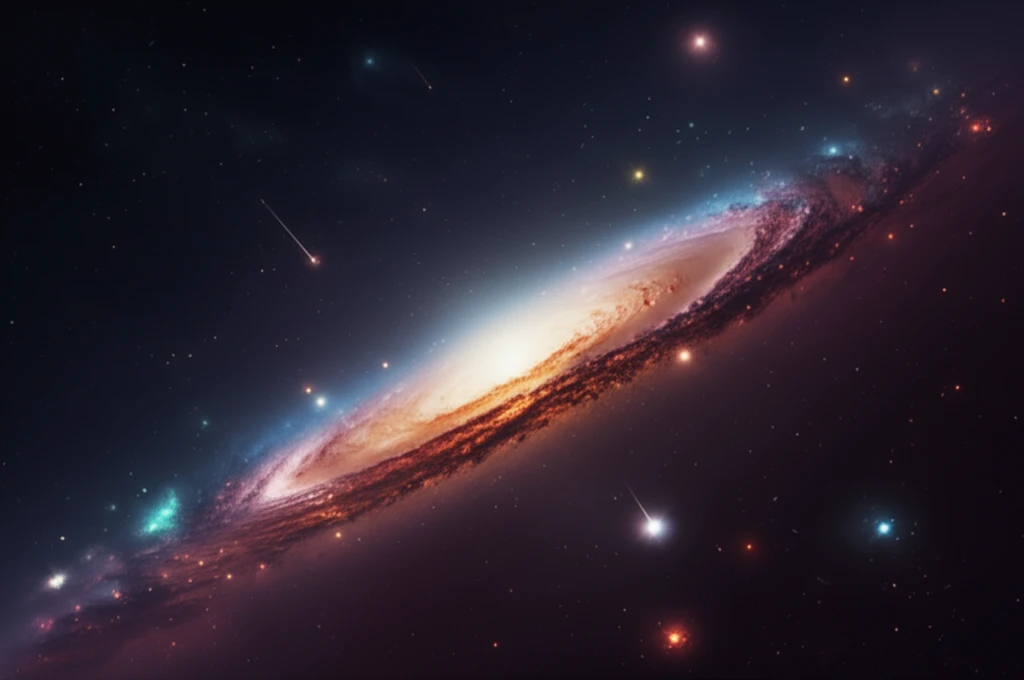
Galactic Weather Forecast: Unveiling the Secrets of Star Formation
"New research models how interstellar conditions influence the birth of stars, offering clues about the Milky Way's dynamic environment."
The cosmos is a vast and dynamic arena, and within galaxies like our own Milky Way, the story of star formation is constantly unfolding. Stars, the fundamental building blocks of galaxies, are born from the interstellar medium (ISM)—a complex mix of gas and dust that permeates the space between stars. Understanding how stars form is crucial to unraveling the mysteries of galactic evolution, and researchers are constantly seeking new insights into this intricate process.
For years, scientists have been developing increasingly sophisticated models to simulate the conditions within galactic disks, where star formation primarily occurs. These simulations aim to capture the interplay of various factors that influence the ISM, such as gravity, radiation, and turbulence. One of the key challenges is to accurately represent the microphysics of ISM heating and cooling processes, which ultimately determine the temperature and density of the gas from which stars are born.
Now, a team of astronomers has presented a new series of high-resolution simulations that shed light on the intricate relationship between the interstellar medium and star formation. These simulations delve into the impact of diffuse far-ultraviolet (FUV) radiation and cosmic rays—two pervasive components of the galactic environment—on the properties of giant molecular clouds (GMCs), the very cradles of star birth.
Simulating the Birth of Stars: A Deep Dive into Galactic Disks

The research team, led by Qi Li from the University of Florida, developed adaptive mesh refinement hydrodynamic simulations of flat rotation curve galactic gas disks. These simulations incorporate a detailed treatment of the ISM physics, focusing on the transition between atomic and molecular phases under the influence of diffuse FUV radiation fields and cosmic-ray backgrounds. The simulations explore the effects of varying FUV intensities, including a model designed to mimic the radial gradient observed in the Milky Way.
- Following heating and cooling processes down to ~10 K, providing a more accurate representation of the cold ISM.
- Employing improved heating and cooling functions based on photodissociation region (PDR) calculations.
- Accounting for a variable mean particle mass across the atomic-to-molecular transition.
- Investigating the effects of different FUV radiation field assumptions, including a radial gradient.
Looking Ahead: Unveiling More Secrets of the Cosmos
These new simulations offer a compelling glimpse into the intricate interplay of factors that govern star formation in galactic disks. By incorporating a detailed treatment of ISM physics and exploring the impact of FUV radiation and cosmic rays, these models provide valuable insights into the dynamic environment where stars are born. As computational power continues to increase, future simulations will be able to incorporate even more complexity, such as magnetic fields and localized star formation feedback, painting an even more complete picture of galactic evolution.
